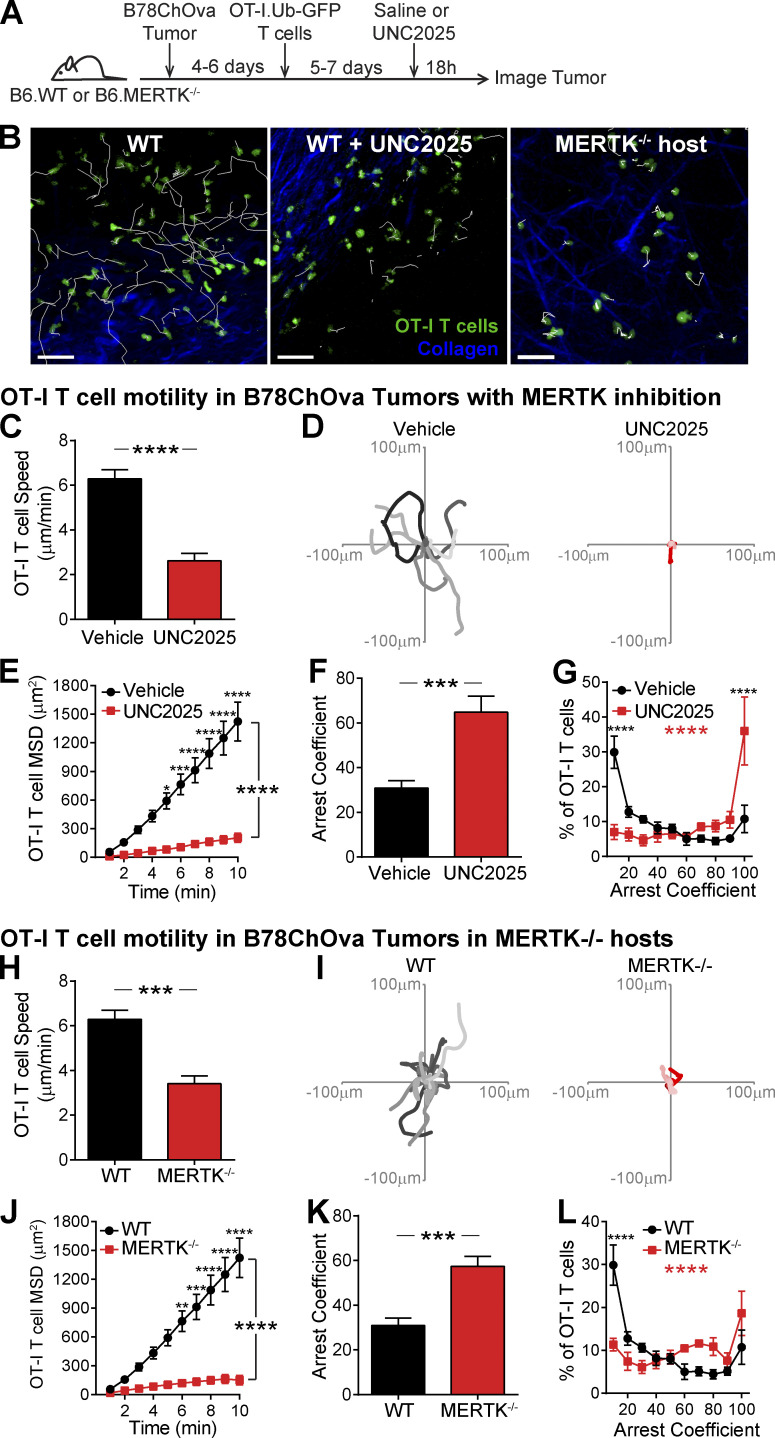Figure 5.
MERTK signaling in tumor associated host cells prevents tumor-specific T cell arrest in a solid tumor. B78ChOva tumor cells were implanted in C57BL/6 or C57BL/6.MERTK−/− mice. Activated OT-I.Ubiquitin-GFP CD8 T cells were then transferred into tumor-bearing mice 4–6 d later. 5–7 d after fluorescent T cell transfer, mice were treated with UNC2025 or vehicle. 18 h after treatment, tumors were excised and analyzed by two-photon microscopy. (A) Schematic of experimental setup. (B) Representative images of OT-I T cell (green) motility on the tumor surface with 10-min tracks of motion. Collagen (blue) delineates the tumor capsule. Scale bars, 50 µm. (C and H) Average T cell crawling speed in the tumor, averaged per tumor. (D and I) Example representative 15-min tracks of motion of OT-I T cells in representative tumors. (E and J) MSD over time, averaged per tumor. (F, G, K, and L) Arrest coefficient: percentage of time that a cell crawls <2 µm/min, averaged per tumor. (B–L) Data are pooled from three to six independent experiments. Error bars represent SEM. n = 10 tumors from WT hosts containing 2,230 analyzed OT-I T cells. n = 6 tumors from UNC2025-treated mice containing 1,130 analyzed OT-I T cells. n = 5 tumors from MERTK−/− hosts containing 641 analyzed OT-I T cells. (C, F, H, and K) Statistics: two-tailed Student’s t test. (E, G, J, and L) Statistics: two-way ANOVA with Bonferroni’s multiple comparison test, treatment effect (black statistic), interaction effect (red statistic), *, P < 0.05; **, P < 0.01; ***, P < 0.001; ****, P < 0.0001.

